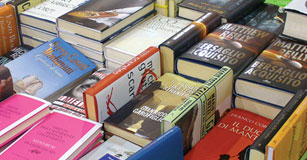Five-Star Book Reviews
Students create a book review on a card or 3D cube to help others choose books they will enjoy

Task
While some emerging readers love any book, others struggle to find books they enjoy reading. In this project, students think about books they have enjoyed reading and why they liked them. They then create a review of one of the books on a card or 3D cube to help others better select a book they will enjoy reading.
Engage
Common Core State Standards for primary grades use book reviews as a performance task for primary grade opinion writing. In Kindergarten, emerging writers simply write a sentence to name a favorite book, but first- and second-grade students also supply reasons to support their opinion.
Many emerging readers struggle to find books they like when faced with a library filled with options. Book reviews are a product you can ask young learners to create that not only meets academic goals but has value to their peers as well.
Begin this project by asking your students to name their favorite book that you have read to them this year. As they share their favorites, ask each student to try to articulate specific reasons that made the story great. You can also open this question up to other students who agree that a particular book was enjoyable.
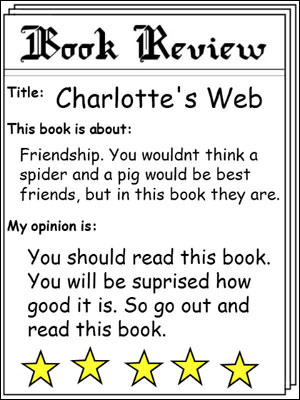
Now, ask students if they have ever had trouble finding a book they like. Then, ask students if they have ever had a friend tell them “You are going to love this book!” but when they read it themselves, they didn’t really enjoy it.
Be sure to acknowledge that not every student likes the same book. Reading is personal and will depend on your interests more than your reading ability. You will also want to try to help students understand that sharing an opinion that is not supported with specific reasons does not provide a reader with a lot of information to make their own decision.
Make your students aware that even adults have problems finding books they enjoy reading. This is why many of them use book reviews as a tool to help them better choose the next book they will read.
Show students an example of a book review, such as ones you find online or print examples from your local paper. These reviews are written for adults, so share an example or two of book reviews written by students as well.
Create
Let students know that they will be writing a review of a book they have enjoyed to help other students learn more about the story and decide if it is a book that they might enjoy reading too.
Have students think of a book they enjoyed reading on their own this year. After students have chosen a title, the next step is to help them move beyond a simple identification of a favorite book, to supplying an opinion about it backed up by reasons and examples in the book.
Provide students with an OREO opinion organizer to help students develop their ideas before they start writing. In this graphic organizer, students state their opinion, such as Mercy Watson to the Rescue is my favorite book. The next part of the organizer asks them to supply a reason for their opinion, followed by an example or two from the book.
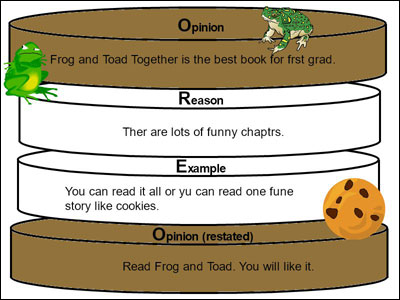
Decide as a class if you want to create reviews you share as posters you will hang on the wall, postcards you will print and share or even 3D cubes students can print on card stock, cut, fold, glue and display.
Provide your students with a book review template they can use to share the ideas they have developed in their OREO organizer.
A digital creativity tool, like Wixie, includes several templates for book reviews, including several that work to print as postcards and trading cards, as well as several 3D cube templates specifically designed for book reviews.
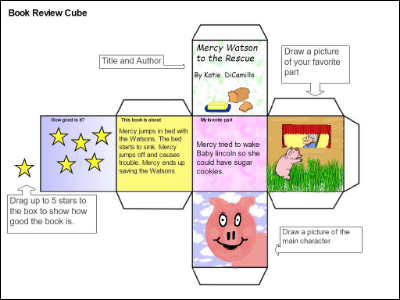
To get your students thinking, you may want to work together to create a list of common elements found in all of the reviews, such as the title of the book, the author’s name, a summary, and an opinion. Then, work with students to decide what should be in their review and design your own Wixie template together for students to use.
Share
Celebrating the work of your emerging writers encourages them to continue their efforts. While displaying their writing is great, show students their writing has value by sharing it with other young learners who will use it to choose their next book to read.
Print two copies of each student’s card or 3D Cube. Share one copy in the reading area or book nook in your classroom and the other in the library media center at your school.
Give student work an even larger audience by reaching out to your local library or independent bookstore to see if they would be willing to share them with their visitors to help them find that just right book.
If your learners are up for more involvement and thinking, ask them to help determine the size and shape their reviews should be shared. While there aren’t a lot of options for a 3D cube, if students wrote single-page reviews, they can print at full-page size and display around school. They can also print multiple copies on a single page at postcard, or even trading card, size.
No matter what format they choose for publishing, ask students to also consider how they will organize the reviews for students to use most effectively. In other words, would sorting the reviews by genre, rating, or theme make the right title even easier for students to find? Instead of giving options for sorting, see if students can come up with these on their own.
Assessment
You can assess student’s prior experience with opinion writing as you work together to evaluate what makes a good book review.
You may want to create a checklist for the things students need to include in their review, to clearly define the content their review should include.
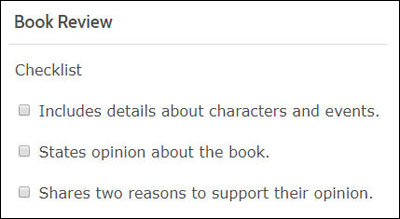
The OREO opinion organizer provides a great formative assessment opportunity you can use before they begin writing to ensure they understand how to support an opinion with reasons and examples, not simply restate it. Their final book review serves as a summative assessment of their opinion writing progress.
If you involved students in thinking about the product format they should use as well as how they should sort, display, and share their work, be sure to record your conversations and observations to make it easier to describe their thinking in your evaluation.
Resources
The Horn Book: Reviews of 2017 Caldecott Award Winners
Spaghetti Book Club: Book Reviews Written by Students
Read Brightly: 30 Books for Early Readers
Standards
Common Core State Standards for English Language Arts:
CCSS.ELA-LITERACY.W.1.1
Write opinion pieces in which they introduce the topic or name the book they are writing about, state an opinion, supply a reason for the opinion, and provide some sense of closure.
CCSS.ELA-LITERACY.W.2.1
Write opinion pieces in which they introduce the topic or book they are writing about, state an opinion, supply reasons that support the opinion, use linking words (e.g., because, and, also) to connect opinion and reasons, and provide a concluding statement or section.
ISTE Standards for Students:
6. Creative Communicator
Students communicate clearly and express themselves creatively for a variety of purposes using the platforms, tools, styles, formats and digital media appropriate to their goals. Students:
a. choose the appropriate platforms and tools for meeting the desired objectives of their creation or communication.
b. create original works or responsibly repurpose or remix digital resources into new creations.
c. communicate complex ideas clearly and effectively by creating or using a variety of digital objects such as visualizations, models or simulations.
d. publish or present content that customizes the message and medium for their intended audiences.








